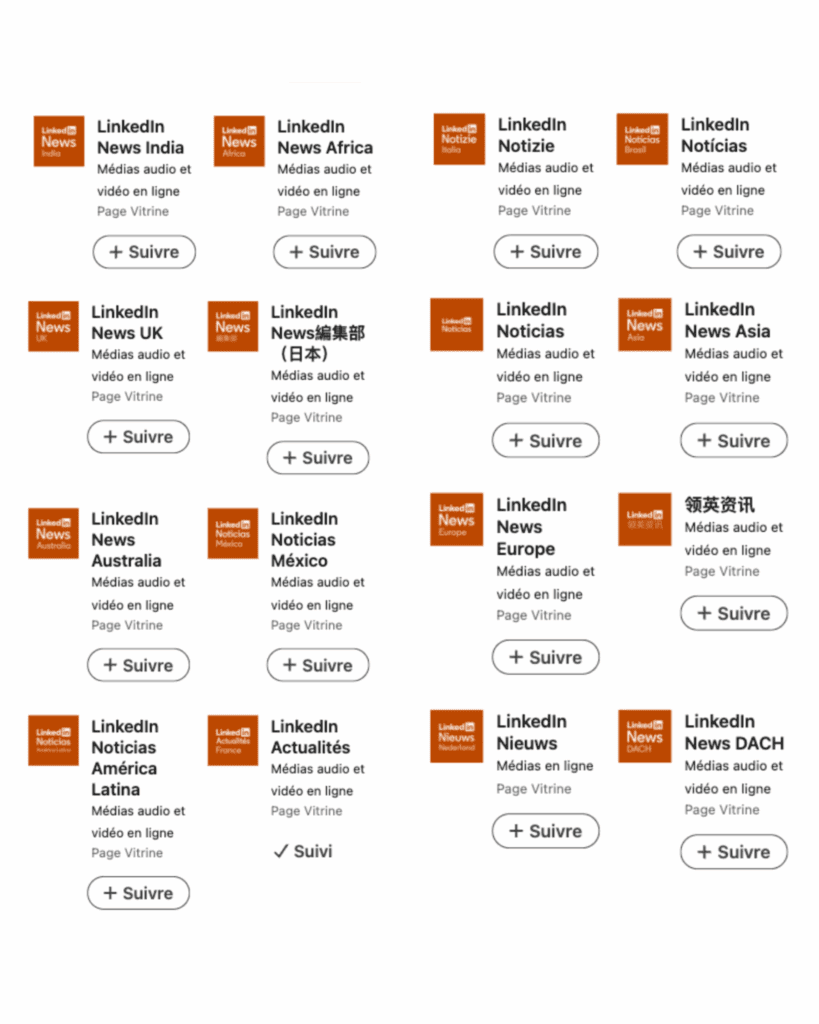A glocal strategy blends global reach with local precision. It was one of the central topics discussed during our talk “From Communication to Information: Where and How Do Decision-Makers Stay Informed?”, with insights from Charlotte Coloos-Gillardeau, Marketing and Customer Experience Director at KPMG France, and Sandrine Chauvin, International Editorial Director at LinkedIn. Here, we share a synthesis of their perspectives — along with practical advice on how to build an effective glocal communication strategy.
Get in touch with an editorial expertWhy Glocal Communication Matters
The term “glocal” is a contraction of “global” and “local”. The concept is straightforward: deliver messages at a global scale while tailoring them to local specificities. The goal is to balance a unified brand identity with adaptations that resonate in each market.
Why is this important? The numbers speak for themselves: 65% of consumers prefer content in their own language. A well-executed localisation strategy can lead to a 70% increase in traffic and improve conversion rates by 20%.
As our experts stressed, it’s nearly impossible to share information “worldwide” without a solid local presence. Immersion in each market’s news, dynamics, and communication codes is essential — and these can vary significantly, even within the same continent. For example, France and Germany, despite being neighbours, have very different expectations when it comes to communication.
This reality directly affects leadership communications. A CEO seeking to establish a presence in a new country cannot rely solely on their reputation at home. To stand out, they must first engage with themes relevant to the target market. By choosing locally resonant topics, they can build credibility and a lasting presence.
Benefits and Challenges of a Glocal Strategy
The main advantage of glocal communication is its ability to combine international consistency with local relevance. Adapting content to local languages, cultures, and preferences boosts visibility and strengthens audience engagement.
LinkedIn’s LinkedIn News pages are a prime example. The platform relies on more than 250 correspondents in nearly 190 countries and regions, creating and curating market-specific content in eight languages. The aim: to address the needs and sensitivities of local professionals while maintaining a global footprint.

For companies, LinkedIn offers two main models for glocal communication:
- Single page with regionalised posts – This option allows you to publish multilingual content on one central page, segmenting posts by region. It’s ideal for maintaining a unified presence while tailoring messages to diverse markets.
- Parent page with local subsidiary pages – Designed for companies producing significant local content, this approach combines a global corporate page with regional or local pages. Each can create tailored content while remaining linked to the main brand.
Both models offer flexibility, enabling businesses to reach local audiences effectively while contributing to global campaigns. This maximises reach and message impact.
However, the challenge lies in striking the right balance between standardisation and personalisation. Maintaining brand coherence while respecting cultural nuances requires careful adaptation of language, tone, and references — and demands resources for research and market analysis. Building local teams or partnering with providers trained in the cultural and economic realities of each market is essential.
Three Keys to a Successful Glocal Communication Strategy
To implement an effective glocal strategy, several steps and tools are essential. Here are three pillars to guide success:
- Map your content – Begin by conducting a detailed audit of all existing content. This identifies what’s already been created and highlights “blind spots” — topics or themes that are underrepresented. This analysis provides a foundation for refining your strategy and anticipating localisation needs. From this map, you can prioritise content for adaptation according to the cultural and linguistic specifics of each target market, and pinpoint items requiring deeper translation work.
- Plan and schedule content – Once you have your content map, develop a global content plan with clear deadlines, responsibilities, and milestones. This ensures a consistent rollout over time and keeps all stakeholders aligned. Using a shared planner — our editorial teams, for instance, often work with clients via Monday.com — allows both global and local teams to track progress and stay aligned with brand priorities.
- Establish global guidelines – An essential reference document — whether an editorial charter, brand book, or brand platform — should set out the company’s voice, tone, visual elements, and usage guidelines for imagery or iconography. Creative teams and translators can then work to consistent standards, ensuring each piece of content reflects the brand identity while resonating locally.



